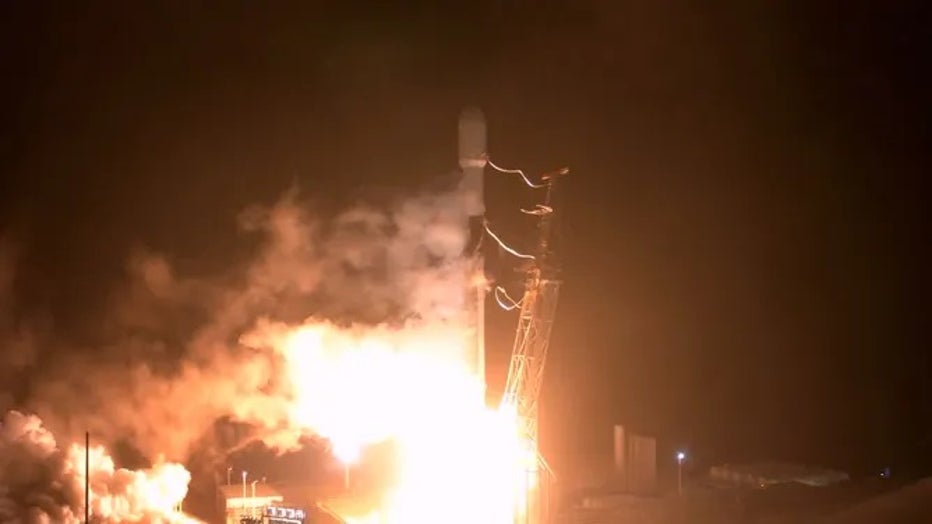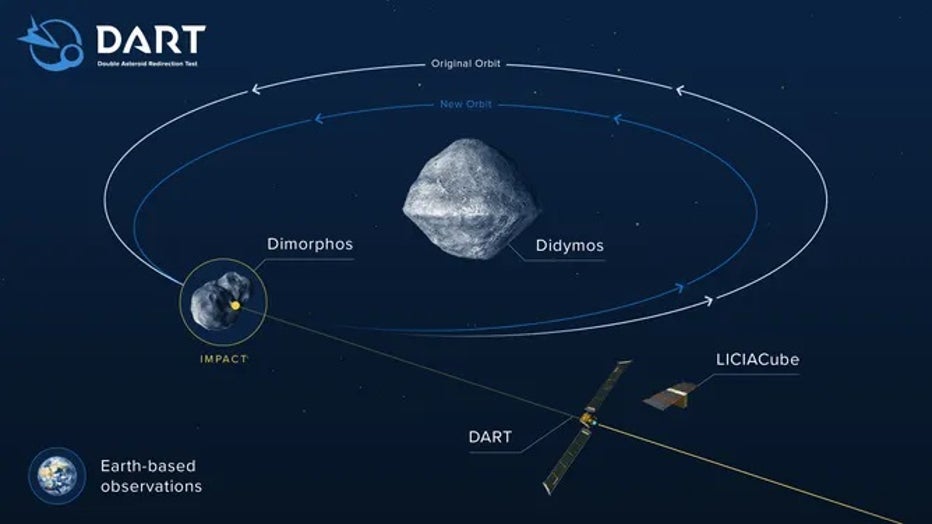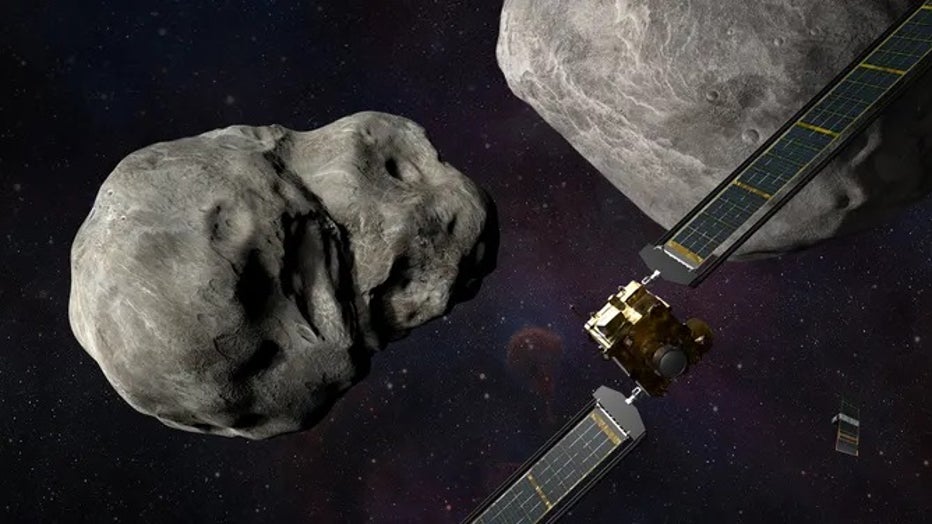NASA spacecraft set to intentionally crash into an asteroid to help save Earth
NASA will use a spacecraft later this month to test a planetary-defense method that could one day save Earth.
The Double Asteroid Redirect Test spacecraft, otherwise known as DART, will be used as a battering ram to crash into an asteroid not far from Earth on Sept. 26. The mission is an international collaboration to protect the globe from future asteroid impacts.
7 THINGS TO KNOW ABOUT NASA’S DART MISSION
"While the asteroid poses no threat to Earth, this is the world's first test of the kinetic impact technique, using a spacecraft to deflect an asteroid for planetary defense," NASA said Thursday.
In November 2021, a SpaceX Falcon 9 rocket launched with DART from the Vandenberg Air Force Base in California.

A SpaceX Falcon 9 rocket lifts off from Space Launch Complex 4 at Vandenberg Space Force Base in California on Nov. 23, 2021, carrying NASA’s Double Asteroid Redirection Mission spacecraft. (NASA / FOX Weather)
Now, 10 months later, DART will catch up with the asteroid by executing three trajectory correction maneuvers over the next three weeks. Scientists say that each maneuver will reduce the margin of error for the spacecraft’s required trajectory to impact the asteroid known as Dimorphos.
NASA says that after the final maneuver on Sept. 25, approximately 24 hours before impact, the navigation team will know the position of Dimorphos within 2 kilometers. From there, DART will be on its own to autonomously guide itself to collision with the out-of-this-world space rock.
Getting a look at the asteroid

This image of the light from asteroid Didymos and its orbiting moonlet Dimorphos is a composite of 243 images taken by the Didymos Reconnaissance and Asteroid Camera for Optical navigation (DRACO) on July 27, 2022. (NASA JPL DART Navigation Team / FO
DART recently got its first look at Didymos, the double-asteroid system that includes its target, Dimorphos.
An image taken from 20 million miles away showed the Didymos system to be quite faint. Still, once a series of images were combined, astronomers could pinpoint Dimorphos' exact location.
NASA SLAMMING A SPACECRAFT INTO AN ASTEROID IS PART OF AN INTERNATIONAL PLAN TO SAVE EARTH
"Seeing the DRACO images of Didymos for the first time, we can iron out the best settings for DRACO and fine-tune the software," said Julie Bellerose, the DART navigation lead at NASA's Jet Propulsion Laboratory. "In September, we'll refine where DART is aiming by getting a more precise determination of Didymos' location."
DART's mission objective

A rendering of the DART spacecraft and the asteroid pair, Didymos and Dimorphos. (NASA)
If DART hits Dimorphos at 15,000 mph as planned, it will test the kinetic impactor Earth defense theory.
"The point of a kinetic impactor is you ram your spacecraft into the asteroid you're worried about, and then you change its orbit around the Sun by doing that," Johns Hopkins Applied Physics Laboratory Planetary astronomer Andy Rivkin said.
DART won't change the orbit of Didymos. It aims to change the speed of the moonlet, Dimorphos. Ground-based telescopes and data from the spacecraft will ultimately tell scientists if their plan worked.
Asteroids move around the sun at a speed of about 20 miles per second. Rivkin explained that if a kinetic impactor method were used to change its orbit, engineers would only want to alter that by a tiny amount, maybe an inch or two a second.
That's why Didymos and its moonlet Dimorphos make a perfect practice target. The tiny asteroid is orbiting Didymos and moves about a foot per second which is much easier to measure than 20 miles per second.
If this works, the idea is to apply the same technique to larger asteroids. Until this mission, scientists could only simulate such an impact in a lab. DART will give them data to help solidify this defense plan.

Illustration of NASA’s DART spacecraft and the Italian Space Agency’s (ASI) LICIACube prior to impact at the Didymos binary system. Credit: NASA/Johns Hopkins APL/Steve Gribben (NASA)

